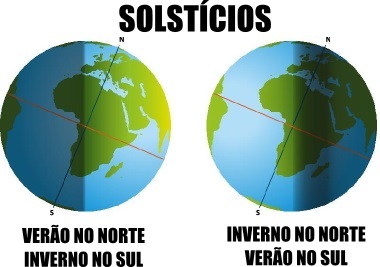solstices and equinoxesare very strange words, aren't they? But don't worry, these elements are complicated by name!
The solstices and equinoxes are two phenomena referring to the different ways in which our planet Earth is illuminated by the sun's rays. It turns out that because of the translation movement, as well as the inclination of the planet throughout the year, the sun's rays are presented in different ways (see the figure at the beginning of the text).
Thus, the equinoxes they are the periods of the year when the Earth is illuminated equally in both hemispheres. At that time, the days and nights have the same duration. Check out the image below:

At the equinox, the Earth is lit equally between the hemispheres
The equinoxes occur in two periods of the year: around the 21st of March, when the autumnal equinox in the southern hemisphere, and around September 23, when the spring equinox.
already the solstices are the periods when the Earth is unevenly lit in the hemispheres. Thus, on June 21, there is an indication of the Winter Solstice in the southern hemisphere (and summer in the northern hemisphere), with days shorter than nights, and on December 21st, there are summer solstices in our hemisphere, with nights shorter than days. Let's see:

The summer and winter solstices in the southern hemisphere.
It is important to remember that the seasons of the year are directly associated with these processes, being inverse between one pole and another. If it's autumn in one hemisphere, it's spring in the other; if it's winter in one hemisphere, then it's summer in the other.
__________________
¹ Image credits: blueshade / Wikimedia Commons
By Rodolfo Alves Pena
Graduated in Geography


